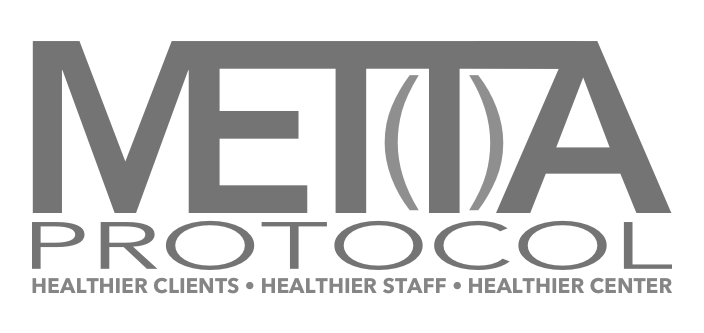Addiction treatment has come a long way in the last 81 years since the advent of Alcoholics Anonymous. All through the millennia that preceded, alcoholics and addicts met a variety of fates, most of them revolving around being swept aside, incarcerated, becoming ill, dying. Those options remain, but there have been advances in the ways that we try to be helpful to the sufferer. Spiritual and pragmatic solutions, support from fellow addicts, these are all impactful interventions that have helped save lives. We now have a new opportunity to grow in our ability to set up treatment centers to succeed.
The research is growing and the anecdotal evidence most certainly shows that trauma, both above and below the threshold of diagnosable PTSD has a big impact on addiction treatment outcomes. There is an ongoing debate as to when and if trauma resolution can happen for an addicted person, since the addiction and its consequences are so destabilizing. A true Catch 22 -- we have to stabilize a person with a possibly destabilizing intervention, so perhaps we don't use the intervention, possibly leaving the person destabilized, ad infinitum. When one witnesses the sometimes revolving door nature of treatment centers, one wonders if there is a solution.
The theory I am working with in the design of Refuge Recovery Centers and other centers that are starting to request my consultation services is this -- if reprocessing and resolving the trauma of addicted people is going to be crucial in their achieving and maintaining long term sobriety, then lets turn to EMDR and its remarkable success at bringing traumatic memories to adaptive resolution. We can do this as a treatment center by using Shapiro's 8 Phase Protocol as a 30,000 foot view of the activity of the center, the 10,000 foot view of the treatment planning for the individuals in treatment, and then down on the ground using the trauma reprocessing phases of the protocol as written for the sufferer.
The higher views are where we are hoping to make a difference in the way addiction treatment is delivered. Over the years, centers have either ignored the impact of trauma and neglected to include any trauma informed interventions in their treatment, while others may provide a smorgasbord of innovative or evidence based treatments to try and address the traumatic precursors and consequences of addiction. Here we look through the lens of the protocol, particularly the first two phases focusing on assessment, preparation, resourcing and stabilization, for the answer to improve short and long term outcomes.
This treatment theory rests upon both Buddhist mindfulness and EMDR. Buddhist Mindfulness as described in the 4 Noble Truths and the 8 Fold Path, with its focus on developing wisdom, living ethically and practicing meditation, provides the main container for the first two phases of treatment. Along with other best treatment practices, helping the sufferer to find a way to quiet the mind sufficiently to engage in the other challenges of new sobriety is crucial. And this work also prepares the person for potential trauma reprocessing work at some juncture of the treatment experience. If they are not ready during a residential stay, then perhaps in PHP. If not, then IOP or OP. And if it still is not appropriate as determined by their therapist and treatment team, then perhaps upon their return to the community.
The main change provided by this view is that we are setting our sights on trauma resolution, we are setting our sights on trauma informed care, we are setting our sights on treating the underlying causes of addiction. Another aspect of this theoretical orientation and treatment approach is the education of the community and the increase of trauma informed and trauma focused services in the community. I look at the EMDR Basic Training that I am delivering to therapists throughout the Los Angeles area (and beyond) as a safety net out in the world for those who come out of treatment and need continuing care that includes EMDR and mindfulness. The hope is that anyone suffering from addiction can find trauma focused and mindfulness based treatment along the complete continuum of care.
There needs to be research done on this model, and I am excited for it to start. At Refuge Recovery Centers, we are beginning to gather qualitative data so that we can continue our work and improve upon it. The initial response to the treatment has been favorable. Clients are able to utilize mindfulness practices, understand attachment theory, develop a more resourced relationship to their mind and body. And many of our clients who have suffered for years with the same traumas that are dispassionately described for the umpteenth time during an intake interview are in the process of reprocessing those traumas. They are reporting a relief that they were never able to find, no different than all the other reports I receive from people who often find in EMDR trauma reprocessing a first time experience of healing. That correlation makes me think this model could work in other settings focused on other diagnoses as well. Again, more will be revealed.
All of the clinicians at Refuge Recovery are either fully trained in EMDR or in the midst of their EMDR training. The staff receives trauma training that includes the language of EMDR. The clinical meetings discuss clients from the perspective of where they are in the paradigm of the 8 phase protocol, and where they are in their progress with mindfulness and associated Buddhist practices. This is the day to day practice of the theory. More will be revealed over time. I am very excited to present all this at the conference, and I hope to see and hear more related developments as we all try to bring healing to those suffering from addiction.
























